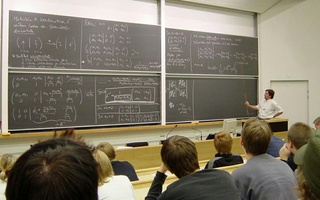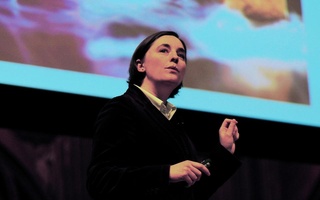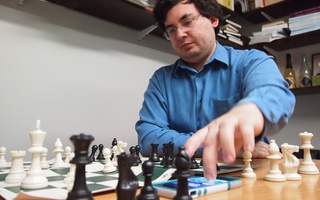“When you look around the country at similar courses, all universities report growth in courses like Stat 110…but ours is much bigger than expected after you adjust for the size of Harvard’s undergraduate body,” said Statistics Department chair David P. Harrington.
NOT REGRESSING TO THE MEAN
Students and professors say that Blitzstein has been able to successfully raise the profile of the field of statistics among undergraduates without compromising its mathematical rigor.
“[Stat 110 is] probably the hardest undergrad stat class at Harvard, but most people just enjoy the class anyway,” said William Z. Chen ’14, a statistics concentrator and a teaching fellow for the course.
In spite of the course’s growing popularity, Blitzstein said that he does not intend to dilute its content.
“I’m determined to never water it down,” Blitzstein said. “Stat 110 is also the key foundation for the upper level stat classes, so I feel that I’d be doing a disservice to anyone who wants to take 111, 123, and various other stat classes which really require a good understanding of this.”
According to Sebastian M. Chiu ’14, also a statistics concentrator and a teaching fellow for the course, Blitzstein has been very honest about its difficulty.
“He’s still able to make the class very difficult and rigorous, as rigorous as it needs to be, but he still is able to maintain such a good relationship with all of the students,” he added.
BIG CLASSES, BIG DATA
With the ability to analyze “big data” becoming more essential in both academic and corporate contexts, universities around the world—Harvard included—are experiencing a growth in the study of statistics.
Yet even after acknowledging these factors, colleagues say that interest in statistics at Harvard’s undergraduate level has outstripped all expectations.
At Harvard, according to Blitzstein, 68 sophomores declared statistics as a concentration this year, a 50 percent increase from 2012 that brings the current concentration size to 150 undergraduates. For the past six years, each incoming class of concentrators has been larger than the last.
“The growth [at Harvard] has been a little more rapid than we anticipated, but...even five years ago we could see the beginnings of it,” Harrington said.
Driving this growth is what Blitzstein calls “an explosion [in] the availability of data.”
“There’s going to be so much value that [companies] can get if they can get really intelligent people who can just look at the data and extract insights from it,” Chen says. “I’m going to be a data scientist after I graduate—that’s a job that didn’t exist five years ago.”
Read more in Faculty News
Af-Am Professors Reflect on Mandela’s Legacy at HarvardRecommended Articles
-
 Student Serenades Stat 110
Student Serenades Stat 110 -
Statistics Department Hopes to Continue GrowthWith Wednesday's deadline for sophomore concentration declarations imminent, Harvard’s Statistics Department looks to continue an escalation that has seen the concentration expand from 5 to 50 concentrators since 2005.
-
 Professors and a Student Think Outside of the Box
Professors and a Student Think Outside of the Box -
 Chess with Blitzstein & Elkies: The Pawn is Mightier than the Sword
Chess with Blitzstein & Elkies: The Pawn is Mightier than the Sword -
Stats Department Expands to Accommodate Upward Trend in ConcentratorsAfter a statistically significant growth in concentrators in recent years, several professors say Harvard’s Statistics Department is reaching its limit.













